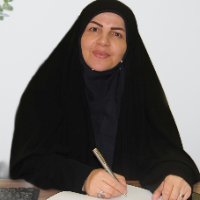Nuclear magnetic resonance -based metabolomics analysis of patients exposed to sulfur mustard in different stages using random forest method
Author(s):
Abstract:
Introduction
Metabolomics is a powerful technique for determination of biomarkers. Here, we aimed to determine discriminatory metabolomic profiles in different stages of sulfur mustard-exposed patients (SMEPs).Materials And Methods
Nuclear magnetic resonance spectroscopy was used to analyze serum samples from 17 SMEPs (normal group patients) and 17 SMEPs (severe group patients). Multivariate statistical analysis using random forest (RF) was performed on a training set (70% of the total sample) in order to produce a discriminatory model classifying two groups of patients, and the model tested in the remaining subjects.Results
A classification model was derived using data from the training set with an area under the receiver operating curve (AUC) of 0.87. In the test set (the remaining 30% of subjects), the AUC was 0.8, thus RF model had good predictive power. We observed significant changes in lipid, amino acids and energy metabolism between two groups of patients.Conclusion
Nuclear magnetic resonance spectroscopy of serum successfully differentiates two groups of patients exposed to sulfur mustard. This technique has the potential to provide novel diagnostics and identify novel pathophysiological mechanisms, biomarkers and therapeutic targets.Keywords:
Language:
Persian
Published:
Koomesh, Volume:17 Issue: 3, 2016
Pages:
701 to 706
https://magiran.com/p1507554
مقالات دیگری از این نویسنده (گان)
-
Evaluation of some phenolic derivatives content in the vegetative growth stage of medicinal plant Ziziphora clinopodioides Lam. from North Khorasan province
Azadeh Taheri, Monireh Cheniany *, Ali Ganjeali, Afsaneh Arefi-Oskouie
Journal of Applied Biology, -
In-silico study MM/GBSA binding free energy and molecular dynamics simulation of some designed remdesivir derivatives as the inhibitory potential of SARS-CoV-2 main protease
Maryam Abbasi, Mahboubeh Mansourian,, *, Salman Taheri, and Karim Mahnam
Research in Pharmaceutical Sciences, Feb 2024



